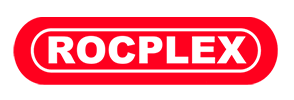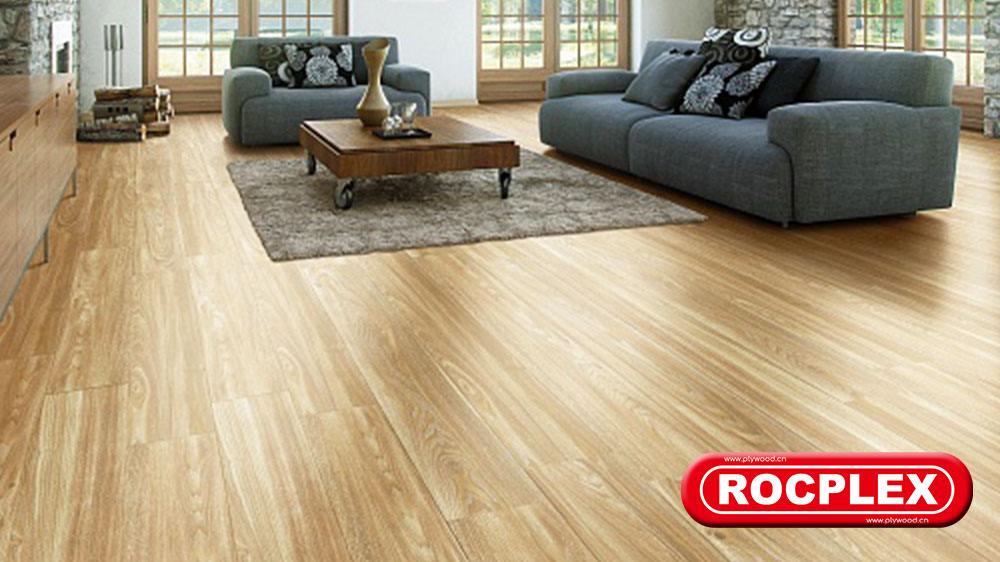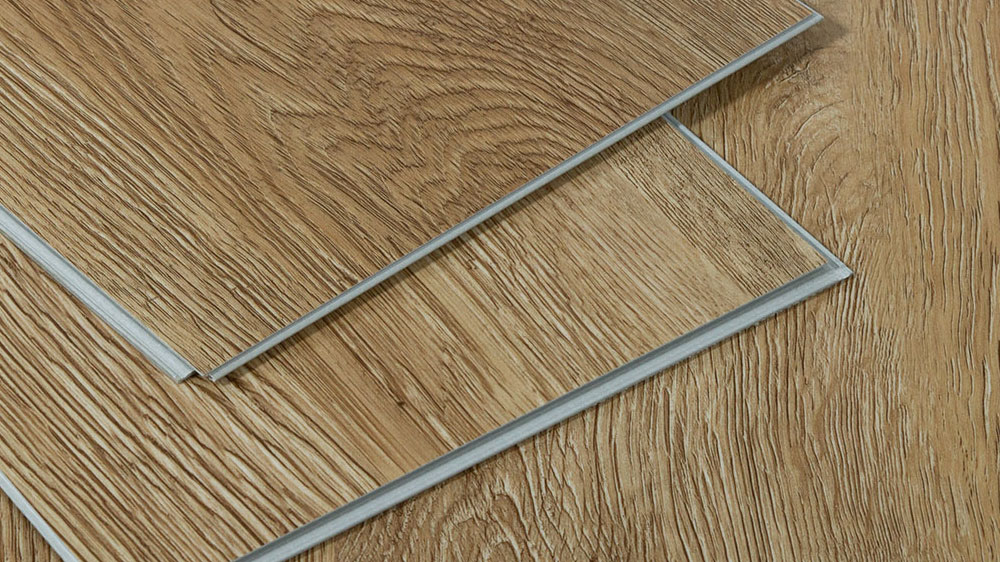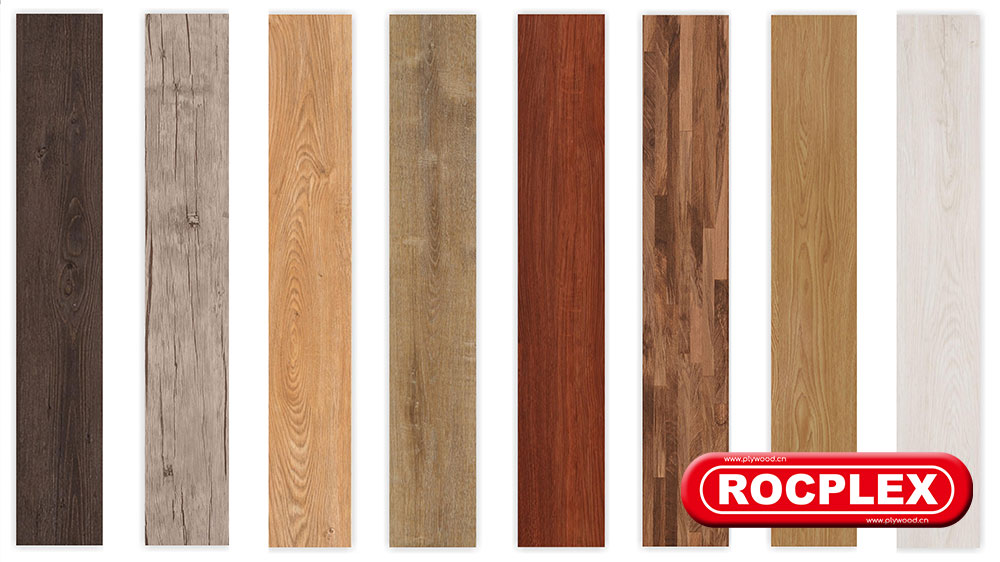What is Vinyl Plank Flooring?
Vinyl plank flooring, also known as luxury vinyl plank (LVP) or luxury vinyl flooring (LVF), is a resilient flooring option that mimics the look of natural wood or stone. It is composed of multiple layers, including a protective wear layer, a printed design layer, and a core layer for stability. This flooring solution is known for its durability, water resistance, and ease of maintenance, making it a popular choice for both residential and commercial spaces.
The Appeal of Vinyl Plank Flooring
Versatility in Design: Vinyl plank flooring offers a wide range of designs, from classic wood grains to modern stone textures. With its advanced printing technology, LVP can replicate the appearance of natural materials with remarkable accuracy.
Durability: Designed to withstand heavy foot traffic, luxury vinyl tile is resistant to scratches, dents, and stains. Its robust construction ensures longevity, making it a cost-effective option for busy households.
Water Resistance: A key advantage of luxury vinyl flooring is its water resistance. Unlike traditional wood floors, LVP can be installed in moisture-prone areas such as bathrooms and kitchens without the risk of warping or damage.
Ease of Installation: Vinyl plank flooring is DIY-friendly, with options for glue-down, click-lock, or loose-lay installation methods. This flexibility allows for quick and easy updates to your space.
Innovations in Luxury Vinyl Tile
Luxury Vinyl Tile (LVT): LVT is a variation of vinyl flooring that is designed to mimic the look of natural stone or ceramic tiles. It offers the same benefits as LVP, with added elegance and sophistication.
Sheet Vinyl Flooring: For those seeking a seamless look, sheet vinyl flooring provides a continuous, waterproof surface. It is ideal for large areas and commercial spaces.
Eco-Friendly Options: The vinyl flooring industry is evolving with a focus on sustainability. Many manufacturers now offer products made from recycled materials, reducing their environmental impact.
Incorporating Vinyl Plank Flooring into Your Home
Living Rooms and Bedrooms: Create a warm and inviting atmosphere with wood-look vinyl planks. They offer the aesthetic of hardwood without the maintenance concerns.
Kitchens and Bathrooms: Opt for waterproof vinyl planks in these areas for a stylish and practical flooring solution. They are easy to clean and can withstand spills and moisture.
Basements and Utility Rooms: Vinyl plank flooring is an excellent choice for basements, as it is resistant to moisture and temperature fluctuations. It provides a durable and attractive surface for high-traffic areas.
Maintaining Vinyl Plank Flooring
Maintenance and Cleaning: One of the advantages of floor is its ease of maintenance. Regular sweeping and occasional mopping with a mild cleaner are all that’s needed to keep your floors looking new.
Scratch and Stain Resistance: The wear layer of vinyl plank flooring provides excellent protection against scratches and stains. This makes it an ideal choice for households with pets or children.
Longevity: With proper care, LVT flooring can last for decades. It’s a cost-effective investment that adds value to your home.
Installation Tips for Vinyl Flooring
Subfloor Preparation: For the best results, ensure that the subfloor is clean, level, and dry before installation. This will help prevent any issues with the flooring in the future.
Acclimation: Allow the vinyl planks to acclimate to the room’s temperature and humidity for at least 48 hours before installation. This helps prevent expansion or contraction after installation.
Layout Planning: Plan the layout of your vinyl planks carefully to ensure a balanced and aesthetically pleasing result. Consider the direction of the planks and the placement of seams for the best appearance.
Advanced Features in Vinyl Plank Flooring
Integrated Underlayment: Some vinyl flooring options come with an integrated underlayment, which provides added cushioning and sound insulation. This feature simplifies installation and enhances the comfort of your floors.
Anti-Microbial Properties: Newer vinyl plank flooring products are being treated with anti-microbial coatings to inhibit the growth of bacteria and mold. This is especially beneficial in damp areas like bathrooms and kitchens.
Low VOC Emissions: Many manufacturers are now producing luxury vinyl tile with low volatile organic compound (VOC) emissions. This contributes to better indoor air quality and a healthier living environment.
Comparing Vinyl Plank Flooring with Other Flooring Options
Vinyl Plank vs. Hardwood: While hardwood floors offer natural beauty, they require more maintenance and can be susceptible to moisture damage. Sheet Vinyl Flooring provides a similar aesthetic with greater durability and water resistance.
Vinyl Plank vs. Laminate: Laminate flooring is another popular alternative, but it is not as water-resistant as vinyl plank. Waterproof flooring offers better protection against moisture, making it a more versatile choice.
Vinyl Plank vs. Carpet: Carpet provides warmth and comfort underfoot, but it can be challenging to keep clean and is not suitable for wet areas. Vinyl plank flooring is easier to maintain and offers a wider range of design options.
Design Trends in Vinyl Plank Flooring
Reclaimed Wood Looks: The trend of reclaimed wood continues to be popular, and luxury vinyl flooring offers realistic replicas of this rustic style.
Wide Plank Designs: Wide planks are in vogue, providing a modern and spacious look to any room. Vinyl plank flooring is available in a variety of widths to suit this trend.
Herringbone and Chevron Patterns: For a more dynamic and eye-catching floor, consider installing vinyl planks in a herringbone or chevron pattern. This adds a touch of elegance and sophistication to your space.
Embracing Eco-Friendly Vinyl Plank Flooring
As environmental awareness grows, the demand for eco-friendly flooring options is on the rise. Many manufacturers are responding by creating vinyl plank flooring made from recycled materials and using production processes that reduce their carbon footprint. These sustainable options offer the same benefits as traditional luxury vinyl plank flooring while minimizing their impact on the environment.
The Future of LVT flooring
The future of vinyl plank flooring looks bright, with ongoing advancements in technology and design. We can expect to see even more realistic wood and stone textures, enhanced durability, and innovative features like built-in soundproofing and smart home integration. As consumers continue to seek practical, stylish, and sustainable flooring options, vinyl flooring will remain at the forefront of the industry.
Installation Tips for a Professional Finish
For those opting for a DIY installation of floor, here are a few tips to ensure a professional-looking finish:
- Use a high-quality underlayment to provide a smooth, even surface and enhance the comfort and sound insulation of your floors.
- When cutting vinyl planks, use a sharp utility knife and a straightedge to ensure clean, precise cuts.
- Leave a small expansion gap around the perimeter of the room to allow for natural expansion and contraction of the flooring.
- Use spacers to maintain consistent gaps between planks, and remove them once the installation is complete.
Addressing Common Misconceptions
There are a few misconceptions about LVT flooring that are worth addressing:
- Durability: Some may believe that LVT flooring is not durable, but modern LVP is designed to withstand heavy traffic and wear.
- Aesthetics: While vinyl plank flooring is synthetic, advancements in printing technology have made it nearly indistinguishable from real wood or stone.
- Health Concerns: High-quality LVT flooring is now made with safer, low-VOC materials, reducing any potential health risks.
Vinyl Plank Flooring: A Smart Choice for Modern Living
Vinyl plank flooring is a smart choice for those seeking a balance of style, durability, and ease of maintenance. With its wide range of designs and features, it offers something for every taste and need. Whether you’re renovating your home or building a new one, consider vinyl plank flooring for a modern and practical flooring solution.
Vinyl Plank Flooring FAQs
What are the disadvantages of vinyl plank flooring?
While vinyl plank flooring is versatile and durable, it can be susceptible to scratches and dents from heavy furniture or sharp objects. It’s also not as biodegradable as natural flooring materials like wood.
Is vinyl plank flooring better than laminate?
Vinyl plank flooring tends to be more water-resistant and durable than laminate, making it a better choice for areas prone to moisture. However, laminate may offer a wider variety of styles and can be more cost-effective in some cases.
What’s the difference between vinyl and vinyl plank?
Vinyl flooring is a broad category that includes sheet vinyl, vinyl tiles, and vinyl planks. LVT flooring specifically mimics the look of wood planks and is designed for easy installation and a realistic appearance.
Is vinyl plank unhealthy?
Luxury Vinyl Tile is generally safe and meets strict health standards. Look for products with low VOC emissions and certifications from reputable organizations to ensure a healthy indoor environment.
Why is vinyl flooring so expensive?
The cost of vinyl flooring can vary depending on the quality, design, and features. Higher-quality vinyl plank flooring with realistic textures and advanced technologies can be more expensive but offers greater durability and aesthetic appeal.
Post time: Apr-07-2024




